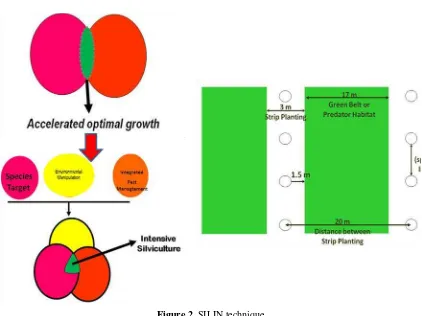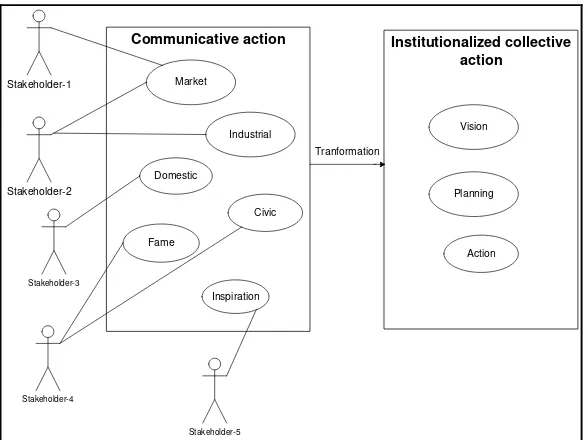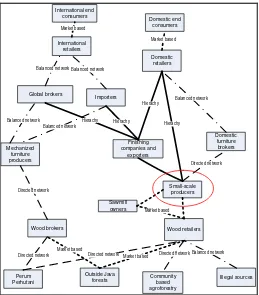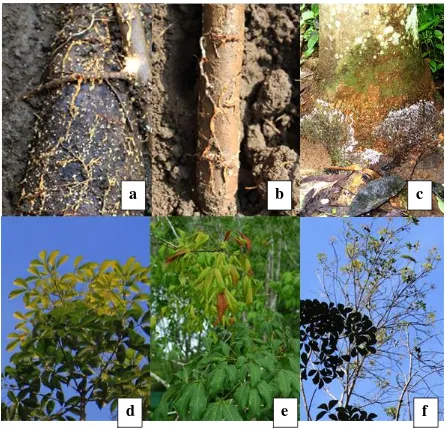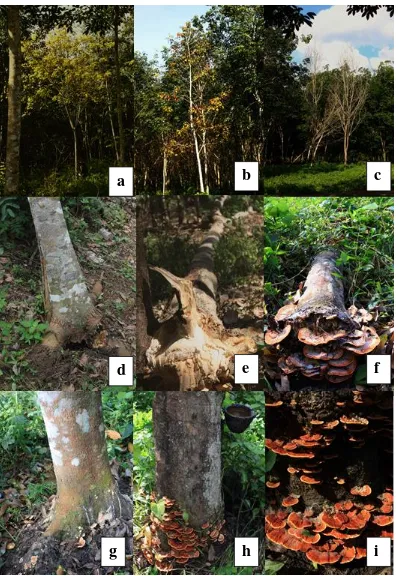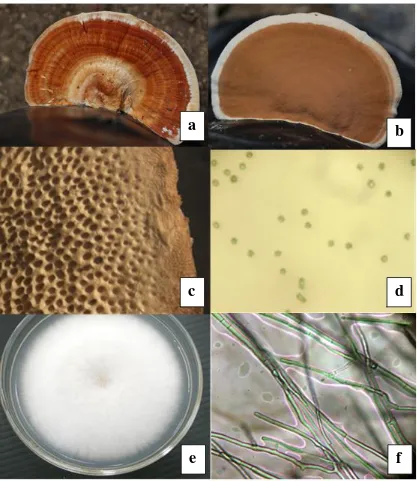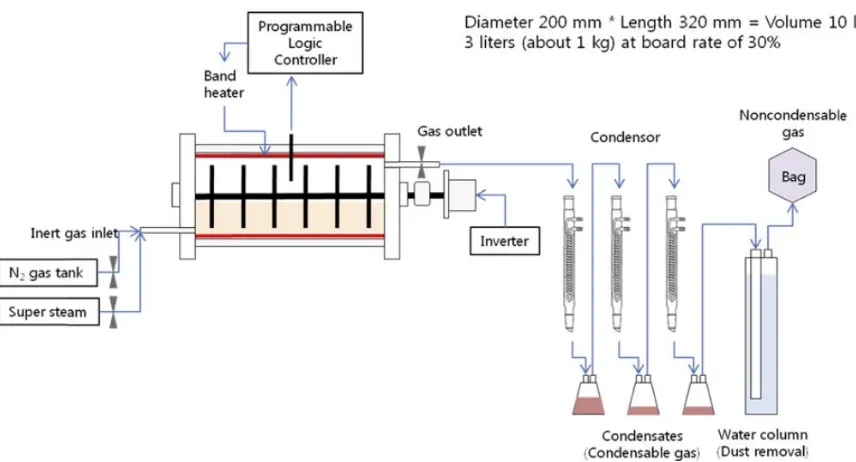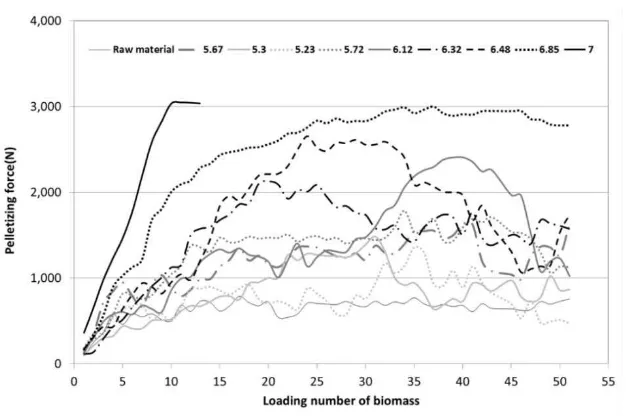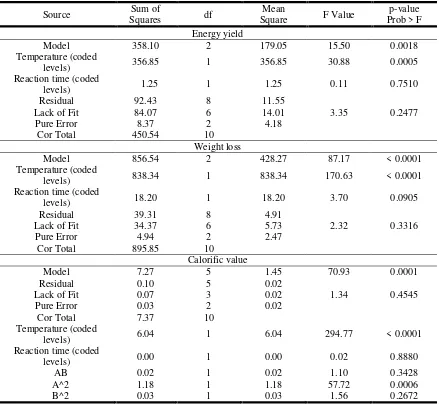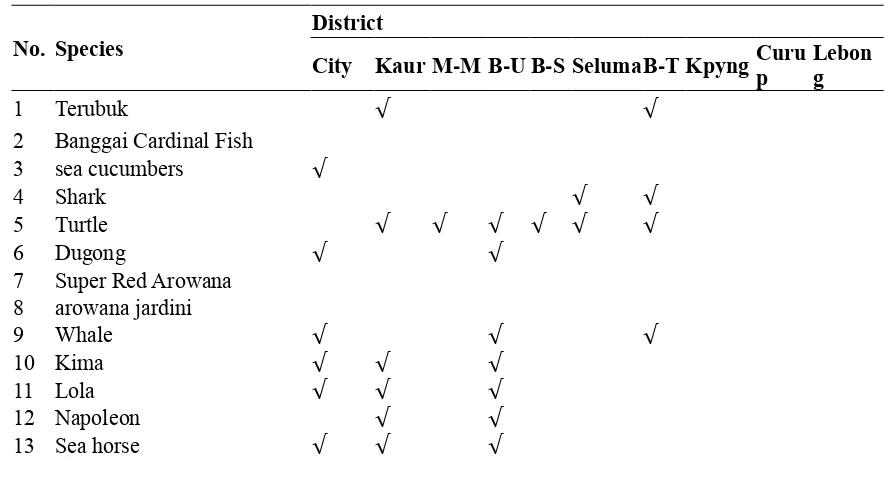PROCEEDINGS
“THE DYNAMIC INTERACTION BETWEEN PEOPLE
AND ECOSYSTEMS FOR THE FUTURE OF HUMAN
SUSTAINABILITY”
rd
THE 3
rd
INTERNATIONAL SYMPOSIUM
THE 3
INTERNATIONAL SYMPOSIUM
FOR SUSTAINABLE HUMANOSPHERE (ISSH)
FOR SUSTAINABLE HUMANOSPHERE (ISSH)
-rd
THE 3
INTERNATIONAL SYMPOSIUM
FOR SUSTAINABLE HUMANOSPHERE (ISSH)
-a Forum of the Hum-anosphere Science School (HSS) 2013
September 17-18, 2013
Gedung Rektorat,
University of Bengkulu,
Bengkulu-Indonesia.
Organized by:
Research and Development Unit for Biomaterials LIPI
Research Institute for Sustainable Humanosphere (RISH) Kyoto University
Faculty of Agriculture University of Bengkulu
Supported by:
Center for Southeast Asian Studies (CSEAS)
International Center for Interdisciplinary and
Advanced Research (ICIAR-LIPI)
rd
THE 3
INTERNA
TIONAL SYMPOSIUM FOR SUST
AINABLE HUMANOSPHERE (ISSH) - a Forum of The Humanosphere Scie
nce School (HSS) 2013, Bengkulu Indonesia, September 17-18, 2013
The 3rd International Symposium for Sustainable Humanosphere ▪ Bengkulu ▪ 2013 i
PROCEEDINGS
THE 3
rdINTERNATIONAL SYMPOSIUM FOR
SUSTAINABLE HUMANOSPHERE [ISSH]-
A Forum of the Humanosphere Science School [HSS] 2013
The Dynamic Interaction between People and Ecosystems for the
Future of Human Sustainability
September, 2013
Gedung Rektorat, University of Bengkulu - Bengkulu
INDONESIA
Organized by
Research and Development Unit for Biomaterials
–
LIPI
Research Institute for Sustainable Humanosphere
–
Kyoto University
Faculty of Agriculture
–
University of Bengkulu
Supported by
Center for South East Asian Studies (CSEAS)
–
Kyoto University
International Center for Interdisciplinary and Advanced Research (ICIAR)
–
LIPI
Published by
SCIENTIFIC COMMITTEE AND EDITORS
OF ISSH BENGKULU 2013
Chief
Dr. Wahyu Dwianto, M.Agr. (LIPI, Indonesia)
Atmospheric Sciences
Prof. Dr. Mamoru Yamamoto (RISH Kyoto University, Japan)
Biosphere Sciences
Prof. Dr. Priyono Prawito (UNIB, Indonesia)
Dr. Marwanto, M.Sc. (UNIB, Indonesia)
Dr. Chaisit Preecha (Rajamangala University of Technology Srivijaya, Thailand)
Geosphere Sciences
Dr. Munasri (LIPI, Indonesia)
Social Economic Sciences
Dr. Motoko Shimagami (CSEAS Kyoto University, Japan)
Forest Sciences
Dr. Haris Gunawan (Riau University, Indonesia)
Dr. Soo Min Lee (CIFOR, Indonesia)
Wood Science and Technology
Prof. Dr. Subyakto (LIPI, Indonesia)
Dr. Euis Hermiati, M.Sc. (LIPI, Indonesia)
Dr. Ridwan Yahya (UNIB, Indonesia)
Wood and Urban Pest Management
The 3rd International Symposium for Sustainable Humanosphere ▪ Bengkulu ▪ 2013 iii
Firda Aulia Syamani, S.TP., M.Si.
Deni Zulfiana, S.Si., M.Si.
Fitria, M.Food.Sc.
Ika Wahyuni, S.Si., M.T.
Ismail Budiman, S.Hut., M.Si.
Ikhsan Guswenrivo, S.T., M.Sc.
PREFACE
The 3rd International Symposium for Sustainable Humanosphere 2013 attracted the interest of scientists from Indonesia and Japan. The symposium covered the disciplines of community-based development and social economic science (climate change and society; ecosystem and community; the economical of natural resources; the role of traditional knowledge and values in managing ecosystems; women and natural resources), atmospheric science (airpollution; equatorial atmosphere; global climate change models; land-ocean weather systems; radar observations; solar activities; space environment; weather patterns), biosphere science (agricultural in changing world; animal ecology and animal husbandry; anthropological approach; bio-indicator; ethnobotany; food security; human development index), geosphere science (earth geological dynamics and natural disasters; earth carbon cycle dynamics; heat, water and CO; hydrology and water management system; land resource management), wood science and technology (biomass conversion; carbonized wood based composites; cellulose; chemical, physical and mechanical properties of wood; timber structure; wood for energy; wood cell formation; wood biochemistry; wood anatomy and plant physiology; wood deteriorating organisms; wood preservation; wooden construction; wood-based material; wood adhesive), wood and urban pest management (insect pest management, ecology and biology of urban pests, control of urban pest including biological, cultural, mechanical, physical and chemical controls), and forest science (biodiversity and society; biodiversity in tropical plantation forests; climate change and biodiversity; forest biomass dynamics; forest carbon accounting and monitoring; forest fire; invasive species; intensive silviculture; structure, growth and function; tree biotechnology). The technical program consisted of 38 oral presentations under 11 sessions and 19 poster presentations.
This publication is a compilation of presented papers. Every effort has been carried out to retain the original meaning and views of authors during the editing processes. All claims on trade products and processes and views expressed do not necessarily imply endorsement by the editors.
We believe that this publication will be a useful source of information and achieved its primary objective of disseminating new experiences and information to researchers, academics, policy makers and students.
The organization of this international gathering and compilation of the proceedings could not have been achieved without the combined effort of all members of the organizing committee and the supports of Research Institute for Sustainable Humanosphere (RISH), Center for South East Asian Studies (CSEAS) Kyoto University, International Center for Interdisciplinary and Advanced Research (ICIAR) – LIPI, University of Bengkulu (UNIB). The editors hereby wish to acknowledge the contributions of all parties.
The 3rd International Symposium for Sustainable Humanosphere ▪ Bengkulu ▪ 2013 v
TABLE OF CONTENTS
Scientific Committee
ii
Preface
iv
Table of Content
v
Keynotes Paper
No
Author
Title
Page
1.
Siti Nuramaliati
Prijono
BIODIVERSITY FOR SUSTAINABLE
DEVELOPMENT
xii
2.
Soekotjo
INDONESIA GREEN BUSINESS STRATEGY
xiii-xxiii
3.
Bambang
Subiyanto, Firman
Tria Ajie, Ferianto,
Syafrizal Maulana,
Kimihiro Tanaka,
Tsuyoshi
Tokunaga, Yukio
Kawamoto,
Fumihiko
Sugiyama, dan Ken
Ikehata
SUPER SWEET Sorghum (Sorghum bicolor (L.)
Moench) POTENTIAL AS A RAW MATERIAL
INDUSTRY IN INDONESIA
xxiv
4.
Motoko
Shimagami
LEARNING FROM COMMUNITIES,
BRIDGING GENERATIONS:
INDONESIA-JAPAN COLLABORATIVE PROJECT FOR
DOCUMENTING COMMUNITY’S
ECOLOGICAL KNOWLEDGE
xxv
5.
Herry Purnomo,
Agus Djoko
Ismanto and
Bayuni Shantiko
COMMUNITY DEVELOPMENT MODELS IN
HANDLING CONFLICTS IN FORESTED
LANDSCAPE: TOWARDS HORIZONTAL
AND VERTICAL EQUITY
xxvi -xl
6.
Munasri
THE USE OF MODIFIED MERCALLI
INTENSITY ( MMI) SCALE FOR THE
GUIDANCE OF PREPAREDNESS IN
EARTHQUAKE ANTICIPATING
xli
7.
Chaisit Preecha,
Wethi
Wisutthiphaet
and
Pornsil Seephueak
OCCURRENCE OF SILENCE DEAD, WHITE
ROOT DISEASE (Rigidoporus microporus) ON
PARA RUBBER (Hevea brasiliensis) AT
SOUTHERN PART OF THAILAND
xlii-xlviii
8.
Wiryono and
Yansen
THE CHALLENGES FOR SUSTAINABLE
FOREST MANAGEMENT IN BENGKULU
PROVINCE: A BROAD REVIEW
xlix-lvii
9.
Soo Min Lee,
Byeong-Ill Na,
Byoung-Jun Ahn
and Jae-Won Lee
MESOCARP, OIL PALM RESIDUES AND
TORREFACTION FOR IMPROVING ITS
ENERGY CONTENT
lviii-lxvii
10.
Chow-Yang Lee
SUSTAINABLE URBAN PEST
MANAGEMENT IN SOUTHEAST ASIA --
CHALLENGES AND FEASIBILITIES
11.
Mamoru
Yamamoto
OVERVIEW OF RADAR STUDIES OF
EQUATORIAL ATMOSPHERE AND
IONOSPHERE IN INDONESIA
lxix
Participants Paper
Community-based Development and Social Economic Science A – 03 Savitri Dyah and
Rachmini Saparita
APPROPRIATE TECHNOLOGY DIFFUSION IN SUPPORT FOR SUSTAINABLE DEVELOPMENT IN BORDER LINE EAST NUSA TENGGARA
1-5
A – 04 Ema Septaria FROM FISHERIES CONSERVATION TO COMMUNITY SUSTAINABILITY (STUDY ON BENGKULU GOVERNMENT'S POLICY ON FISHERIES)
6-12
Atmospheric Science
B – 03 Muhamad Nur and Iskhaq Iskandar
COMPARISON OF MONTHLY PRECIPITATION FROM RAIN-GAUGE AND TRMM SATELLITE OVER PALEMBANG DURING 1998-2008
13-19
B – 04 Fikri Bamahry, Khomsin, Susilo, and Joni Efendi
ANALYSES ON SPATIAL DISTRIBUTION OF ATMOSPHERIC WATER VAPOR OVER EAST JAVA REGION, INDONESIA USING
CONTINUOUS GPS
20-24
B – 05 Khomsin, M. Taufik, Yuwono, and
Dewangga Eka
ANALYSIS OF SEA SURFACE HEIGHT USING WAVEFORMS RETRACKING IN THE COASTAL AREA (CASE STUDY: JAVA SEA)
25-30
Geosphere Science
C – 01 Gusta Gunawan, Besperi, M. Khairul Amri Rosa, and Melli Suryanty
ASSESSING WATER DISCHARGE IN
MANJUNTO WATERSHED-INDONESIA USING GIS AND SWAT MODEL
31-37
C – 02 Fahrudin and Drajat Agung Permana
PALEOSEISMOLOGY STUDY AT KALIGARANG FAULT ZONE RESULT EARTHQUAKE IN THE PAST, SEMARANG, INDONESIA
38-45
C – 03 Diyan
Parwatiningtyas, Erlin Windia Ambarsari, and Dwi Marlina, Yogi Wiratomo
CALCULATION OF DISASTER RISK VALUE IN THE PROSPECT MINING AREA, BLITAR
DISTRICT, EAST JAVA USING MICROTREMOR ANALYSIS
46-55
C – 04 Sonny Aribowo and Indah Pratiwi
GEOMORPHIC FEATURES ALONG THE MANNA FAULT SEGMENT OF SUMATRAN FAULT ZONE BASED ON REMOTE SENSING INTERPRETATION
56-62
C – 05 Qurna Wulan Sari, Udrekh, Azhar K. Affandi, and Erni
CHARACTERISTICS OF TEMPERATURE AND PRESSURE ON GAS HYDRATE STABILITY ZONE USING SEISMIC 2D-MULTI CHANNEL IN SIMELUE FORE ARC BASIN, SUMATRA
The 3rd International Symposium for Sustainable Humanosphere ▪ Bengkulu ▪ 2013 vii Biosphere Science
D – 01 Kasrina and Rita Susanti
ETHNOBOTANICAL STUDY OF MEDICINAL PLANTS FOR LEMBAK DELAPAN ETHNIC IN TANJUNG TERANDA, BENGKULU
70-76
D – 02 Effendi Parlindungan Sagala
THE IMPORTANCE ROLE OF ANIMAL ECOLOGY DEEPLY TO CONSERVATION POPULATION OF PANGOLIN IN SECONDARY FOREST OF SUMATRA ISLAND
77-80
D – 03 Rizwar, Zulkifli Dahlan, Dwi Setyawan, and Indra Yustian
INITIAL STUDY ON INVENTORY OF VEGETATION IN SUMATRAN ELEPHANT HABITAT IN PADANG SUGIHAN RESERVE, SOUTH SUMATRA PROVINCE
81-87
D – 04 Yuwana GREEN HOUSE EFFECT SOLAR DRYERS : AN
APPROPRIATE TECHNOLOGY FOR FOOD SECURITY
88-94
D – 05 Choirul Muslim DEVELOPING SUBJECTIVE ECOLOGY FOR SUSTAINABLE AND THE FITNESS OF HUMANOSPHERE
95-102
D – 06 A. Romeida, D.W. Ganefianti, Rustikawati, and Marlin
FOLIAR FERTILIZER APLICATION FOR
INDUCING RAPID AND UNIFORM FLOWERING ON Spahoglottis plicata Blume. var. ALBA ORCHID
103-107
D – 07 D.W. Ganefianti, M. Chozin, S.H. Hidayat, and M.Syukur
DIALLEL ANALYSIS OF BEGOMOVIRUS RESISTANCE AND AGRONOMIC
PERFORMANCES IN CHILI PEPPER
108-112
D – 08 M. Chozin and D.W. Ganefianti
CORRELATION AND PATH ANALYSES FOR DETERMINATION OF SELECTION CRITERIA IN CHILI PEPPER BREEDING FOR FRUIT YIELD IMPROVEMENT
113-117
D – 09 Marwanto, Roziman Efendi, Muhammad Chosin, and Merakati Handajaningsih
PROMOTING EFFECT OF ETHANOLIC
EXTRACT OF ROOT TUBER OF Gloriosa superba
L. ON MELON GROWTH AND FRUIT QUALITY
118-122
D – 10 Rr. Yudhy H.Bertham, Abimanyu D. Nusantara, and Usman Siswanto
GROWTH OF ARTEMISIA ANNUA,
ARTEMISININ SYNTHESIS, AND ARBUSCULAR MYCORRHIZAL FUNGUS COLONIZATION AS AFFECTED BY ACCESSION AND
FERTILIZATION
123-129
D – 11 Tunjung Pamekas, Christanti
Sumardiyono, Nursamsi Pusposendjojo, and Didik Indradewa
VARIABILITY OF SEVEN ISOLAT OF
Colletotrichummusae THE PATOGEN OF
ANTHRACNOSE DISEASE ON BANANA FRUIT
Forest Science
E – 02 Haris Gunawan, Shigeo Kobayashi, Kosuke Mizuno, Yasuyuki Kono, Wahyu Dwianto, and Sukma Surya
Kusumah
THE PROMOTION OF RURAL COMMUNITIES PARTICIPATION TO CONSERVE BIOMASS AND CARBON FUNCTIONS OF PEATLAND
ECOSYSTEM IN RIAU BIOSPHERE RESERVE
137-144
E – 03 Hanifa Marisa, Nita Aminasih, and Muharni
THE PROVING OF POWERLESS MYSTIC OF AKAR NYILUM (Millettia pachycarpa) IN
KEMELAK FOREST AREA, BATURAJA, SOUTH SUMATERA
145-148
E – 04 Siti Latifah POTENTIAL OF BIOMASS AND SPATIAL DISTRIBUTION OF FOREST PLANTATION OF HYBRID EUCALYPTUS
149-155
E – 05 Widyatmani Sih Dewi, Sumarno, and MTh. Sri Budiastuti
TREES CHARACTERIZATION POTENTIALLY TO REHABILITATION OF WATER CATCHMENT AREAS AFTER 2010th MOUNT MERAPI
ERUPTION
156-162
E – 06 Septri Widiono, Ketut Sukiyono, and Enggar Apriyanto
POPULATION PRESSURE ON THE VILLAGES AROUND KERINCI SEBLAT NATIONAL PARK (TNKS) OF LEBONG DISTRICT, PROVINCE OF BENGKULU, INDONESIA
163-169
E – 07 Yansen, Robert A. Congdon, and Paul R. Williams
THE ESTABLISHMENT OF Alstonia muelleriana, A RAINFOREST SPECIES IN WET
SCLEROPHYLL FOREST IN NORTH QUEENSLAND FAVOURED BY FIRE: IMPLICATIONS FOR ITS MANAGEMENT
170-175
Wood Science and Technology F – 01 Wahyu Dwianto,
Fitria, Ika Wahyuni, and Sri Hartati
A STUDY ON THE MECHANISM OF
CELLULOSE DEGRADATION BY ENZYME
176-180
F – 04 Irfan Gustian, Eka Angasa, Ghufira, and Hairulumah
POLYELECTROLYTE MEMBRANE BASED ON FIBER OF WASTE OF PALM OIL INDUSTRY
181-186
F – 05 Euis Hermiati, Widya Fatriasari, Dede Heri Yuli Yanto, Faizatul Falah, and Lucky Risanto
NATURAL RUBBER-BASED WOOD ADHESIVE TO SUPPORT GREEN BUILDINGS
187-194
Wood and Urban Pest Management G – 01 Kazuko Ono,
Toshimitsu Hata, Tsuyoshi Yoshimura, and Kazuhiko Kinjo
DECAY PERFORMANCE OF TERMITE
MUSHROOM, Termitomyces eurrhizus AND THE
SEM OBSERVATION OF DECAYED WOOD
The 3rd International Symposium for Sustainable Humanosphere ▪ Bengkulu ▪ 2013 ix G – 02 Suswati, Asmah
Indrawati, and Deddi Prima Putra
THE USE OF COCONUT FIBRE AND ARBUSCULAR MYCORRHIZAL FUNGI TO ENHANCE PISANG BARANGAN SEEDLING RESISTANCE TO BLOOD DISEASE BACTERIUM AND Fusarium Oxysporum F SP. CUBENSE
199-204
G – 03 Munadian, Yuiji Nakada, Yoshida Makoto, Ridwan Yahya,
Mucharromah,and Tsuyoshi Yoshimua
ANALYSIS OF FUNGAL DIVERSITY EXISTING IN NATURAL AGARWOOD (JINKOU) OF
Aquilaria malacensis FROM BENGKULU,
SUMATERA USING DENATURING GRADIENT GEL ELECTROPHORESIS
205-208
G – 04 S. Khoirul Himmi, Tsuyoshi Yoshimura, Yoshiyuki Yanase, Masao Oya, Toshiyuki Torigoe, and Setsuo Imazu
EVALUATION OF NEST-FOUNDING BEHAVIOR OF PRIMARY REPRODUCTIVES OF THE
INVASIVE DRYWOOD TERMITE Incisitermes minor (Hagen) (Isoptera: Kalotermitidae) BY X-RAY
TOMOGRAPHY
209-212
G – 05 Titik Kartika,
Tsuyoshi Yoshimura, and Nobuhiro Shimizu
AGGREGATION BEHAVIOR OF THE POWDER POST BEETLE, Lyctus africanus (LESNE)
213-216
G – 06 Asmah Indrawatiand Suswati
THE STUDY OF SUPPRESSIVE EFFECT BIOFUMIGANT BRASSICACEAE AND MYCORRHIZAE FUNGI INDIGENOUS TO BLOOD DISEASE BACTERIUM ON PISANG BARANGAN SEEDLING
217-222
G – 07 Siti Herlinda, Rafika Dewi, Triani Adam, Suwandi, Rosdah Thalib, and Khodijah
SPECIES ABUNDANCE AND DIVERSITY OF PREDATORY SPIDERS FOR INSECT PEST OF RATOONING RICE APPLIED BY
MYCOINSECTICIDE AND WITHOUT MYCOINSECTICIDE
223-230
G – 09 Fanani Haryo Widodo, Chairil Anwar, Ngudiantoro, Dwi Setyawan, and Darmawijoyo
MALARIA TRANSMISSION AS A PROBLEM OF DYNAMIC INTERACTION BETWEEN PEOPLE AND ECOSYSTEM AND ITS SOLUTION
THROUGH QUANTITATIVE APPROACH CASE STUDY ON MALARIA TRANSMISSION IN BENGKULU CITY
231-239
Poster Presentation
P – 01 Savitri Dyah TECHNOLOGY TRANSFER FOR
EMPOWERMENT OF SMALL SCALE FOOD PROCESSING ENTERPRISE
240-244
P – 03 Bandi Hermawan DEVELOPING REMOTE SOIL MOISTURE MONITORING TECHNIQUES FOR IMPROVED DECISION MAKING ON IRRIGATION
245-250
P – 04 Muhammad Fauzi, Dwi Setyawan, Budhi Setiawan, and Ridhah Taqwa
ANALYSIS OF THE SOIL BEARING CAPACITY FOR SETTLEMENT IN THE CONSTRUCTED AREA IN WETLANDS (CASE STUDY IN SUB-DISTRICT OF MUARA BANGKAHULU, BENGKULU CITY)
P – 05 Sunarti, Heri Junedi, and Refliaty
SOIL CARBON STOCK AS AFFECTED CONSERVATION FARMING SYSTEM APPLICATION ON SOYBEAN FARMING
259-263
P – 08 Marulak Simarmata, Dwi Wahyuni Ganefianti, and Rinova C. Manurung
INITIAL DETECTION OF SENSITIVITY OF UPLAND RICE CULTIVARS UNDER ALUMINUM STRESS
264-271
P – 09 Deni Zulfiana and Anis Sri Lestari
THE EFFECTIVENESS OF Metarhizium anisopliae
AND Nomuraea rileyi EXTRACT TOWARDS
Spodoptera litura ON LABORATORY SCALE
272-275
P – 10 Efratenta Katherina Depari, Istomo,and Omo Rusdiana
THE EFFECT OF GROWTH SITE FACTORS AND SILVICULTURAL TREATMENTS ON
PRODUCTIVITY OF KAYU BAWANG (Dysoxylum mollissimum Blume) IN PRIVATE FOREST IN
BENGKULU
276-283
P – 13 Danang Sudarwoko Adi, Lucky Risanto, Ratih Damayanti, Sri Rullyati,
Ruliyana Susanti, Euis Hermiati, and Takashi Watanabe
ANATOMICAL AND PHYSICAL PROPERTIES OF FAST GROWING WOOD SPECIES FROM CENTRAL KALIMANTAN AS STRUCTURAL MATERIAL
284-291
P – 16 Wida
B.Kusumaningrum, Ismadi, and Sasa Sofyan M
FIBRILLATION PROCESS DEVELOPMENT OF FIBERS FROM MILLED EMPTY FRUIT BUNCH (EFB) AND CHARACTERISTICS OF POLYVINYL ALCOHOL/ EFB FIBERS COMPOSITES
292-299
P – 17 Kurnia Wiji Prasetiyo, Lisman Suryanegara, and Subyakto
PHYSICAL AND MECHANICAL PROPERTIES OF POLYLACTIC ACID-FILLED CHITIN OR
CHITOSAN COMPOSITES
300-304
P – 18 Yusup Amin and Imam Wahyudi
ANATOMICAL CHARACTERISTICS OF
WANGKAL WOOD (Albizia procera (Roxb.) Benth)
305-310
P – 19 Didi Tarmadi, S. Khoirul Himmi, and Sulaeman Yusuf
LARVICIDAL ACTIVITY OF Cerbera manghas
EXTRACT AGAINST TWO MOSQUITO VECTORS, Aedes aegypti AND Culex quinquefasciatus (Diptera: Culicidae)
311-316
P – 21 Buyung Keraman, H.M.T. Kamaluddin, Ngudiantoro, and Dwi Putro Priadi
CONTACT TRACING STRATEGY TO IMPROVE THE FINDING QUALITY OF TUBERCULOSIS (TB) SUSPECTS
IN BENGKULU TENGAH DISTRICT
317-320
P – 24 Irma Calista Siagian, Taupik Rahman, Yulie Oktavia, and Yartiwi
TOMATO PLANT RESPON TO DIFFERENT DOSAGE OF NPK PHONSKA FERTILIZER IN SUNGAI SERUT SUBDISTRICT, BENGKULU CITY
321-325
P – 25 Sri Suryani M Rambe, Irma Calista Siagian, and Kusmea Dinata
SITE SPECIFIC FERTILIZATION OF RGL CITRUS IN LEBONG DISTRICT, PROVINCE OF
BENGKULU
The 3rd International Symposium for Sustainable Humanosphere ▪ Bengkulu ▪ 2013 xi P – 26 Nurmegawati and
Yahumri
LAND SUITABILITY EVALUATION OF RUBBER PLANT, OIL-PALM AND ROBUSTA COFFEE AT KAYU AJARAN VILLAGE IN DISTRICT OF ULU MANNA SOUTH BENGKULU
331-338
P – 27 Yartiwi, Yulie Oktavia, and Andi Ishak
INCREASING RICE PRODUCTION USING “JAJAR LEGOWO” PLANTING SYSTEM
339-343
P – 28 Wahyu Wibawa and Nurmegawati
POTENTIAL OF IMPROVED SWAMP RICE VARIETIES ON TIDAL SWAMP IN BENGKULU CITY
344-346
P – 31 Firda Aulya Syamani, Dian Susanthy, Sudarmanto, and Lisman Suryanegara
PRODUCTION OF GREEN COMPOSITES BASED ON POLYLACTIC ACID AND BLEACHED PULP FROM OIL PALM FRONDS
347-353
The 3rd International Symposium for Sustainable Humanosphere (ISSH) A Forum of Humanosphere Science School (HSS) Bengkulu, 17 -18 September 2013
BIODIVERSITY FOR SUSTAINABLE DEVELOPMENT
Siti Nuramaliati Prijono
1*
1Research Center for Biology, Indonesian Institute of Sciences
*Corresponding author: siti.nuramaliati.prijono@lipi.go.id
Abstract
As an archipelagic state , with its thousands of islands scattered between two continents (Asia and Australia) and between the Pacific and Indian oceans, Indonesia endowed with a rich and unique biodiversity. Biodiversity is the foundation of life on earth and one of the pillars of sustainable development. Human survival and wellbeing depend upon biodiversity and healthy ecosystems, and the goods and services they provide. Biodiversity is life insurance for sustainable development in Indonesia. Therefore, efforts to conserve biodiversity in Indonesia are very important since many places are centres of origin, centres of diversity and centres of endemism. Conserving and promoting sustainable use of biodiversity creates opportunity for reducing poverty and for improving human well-being, and it is one of the challenges that Indonesia has committed itself to addressing. So many conservation areas have been established or designated on all major habitat types, including 8 Biosphere reserves as models of land management and of approaches to sustainable management. Experience shows that Biosphere reserve considered as the most suitable approach. Biosphere Reserve is based on holistic landscape approach by considering real problems on field and involves stakeholders to understand and solve the problem together. For sustainable use and conservation of biodiversity, require creativity and new advances in scientific knowledge. We must take efforts in research activities, because biodiversity sciences are an integrated field of science requiring a wide scope of knowledge.
The 3rd International Symposium for Sustainable Humanosphere (ISSH) A Forum of Humanosphere Science School (HSS) Bengkulu, 17 -18 September 2013
INDONESIA GREEN BUSINESS STRATEGY
Soekotjo
1*1Fakultas Kehutanan UGM,
Jl. Agro, Bulaksumur, Yogyakarta - 55281, INDONESIA
*Corresponding author: soekotjo.fahutan@gmail.com
Abstract
We recognize that green business plays a vital role on conservation and sustainable development. The green business developments present both opportunities and challenges for socioeconomic development and environment and have a number of potential impact on natural resources and the rural poor who depend on natural resources for their livelihoods. The green business defined as: bio-energy, climate change, job creation & poverty eradication, enhancing food security, bioactive compound for medicine, biodiversity, water-quality, quantity & regimes, and forest health & sustainability as agreed during United Nation Conference, Rio + 20. At more strategic vision, Indonesia has also committed to achieve United Nation Conference on Sustainable development at Rio 1992 and Rio 2012( Rio + 20). The tropical rain forest of Indonesia is a treasure house of potentially useful species. Consequently, in this global era, we have to work hard, keep creating and innovating a new technology to utilize our resources. Among other positive results, the author has developed an innovative planting model and silvicultural system for commercial plantations and the rehabilitation of logged over areas and other degraded forests. The system was referred as Intensive Silvicultural Technique (SILIN). SILIN improve forest productivity from ( 20 – 40 )m3/ha/35 yrs to 280 m3/ha/30
yrs. SILIN has showed to be economically profitable and environmentally compatible and has been selected in Year 2008 as one of hundred prospective Indonesia best innovations by Business Innovation Centre & Kantor MenRistek & BPPT. In Year 2013 the GOI established Tem Task Force SILIN to guide and speed up the progress of SILIN to facilitate green business program.
Keyword: Green Business, Strategy, Sustainability, Productivity.
Introduction
According to Rio + 20, green business in the context of sustainable development and poverty eradication as one of the important tools available for achieving sustainable development and that could provide options for policymaking but should not be rigid set of rules. Green business will promote economic growth, foster innovation and provide opportunities, and benefit for all and respect of all human rights.
In the context of forest resources, green business will contribute to provide source of energy, reducing CO2 emission, job creation & poverty eradication, enhancing food security, providing
bioactive compound for medicine, sustaining biodiversity, ensuring water in term of quality, quantity & regimes, and improving forest health and sustainability. Therefore, green business hopefully will improve economic growth.
Figure 1. Trend in reducing wood production
Figure 2. SILIN technique
SILIN technique consists of three elements (Figure 1 left) that are (1) selected species, (2) environment manipulation and (3) integrated pest management [1]. Selected species was the results from species trials, in this regards we screened group of commercial species in several locations and replicated. Environment manipulation is by providing optimal light and enough nutrition by digging planting hole (40 cm x 40 cm x 30 cm) for new planted young trees. Planting hole be put mixture of compos and mineral soils ( 1 : 1 by volume), see Figure 1 right. Integrated pest management is by providing habitat of predator in un-disturb area (85%).
The 3rd International Symposium for Sustainable Humanosphere (ISSH) xv A Forum of Humanosphere Science School (HSS)
Bengkulu, 17 -18 September 2013
The advantages of SILIN technique over the existing silvicultural systems are :
a. Management control by both the concession holders and independent auditors can be conducted easily and efficiently
b. Forest productivities is increasing ( 5 – 9) times compares to existing systems
c. High productivity and product quality harvested continually would increase company activities, which would lead to increase of job positions available, increasing company capital and investment and intensification of funds for business and activities. All of these would eventually lead to increase company reputation.
Attempt to increase productivity of logged over forests could be achieved by using SILIN technique. However, before applying the SILIN technique at a large scale, we had to test SILIN technique in pilot test called concession pilot test model (HPH/concessions model). There were six HPH model as shown in Figure 3.
Figure 3. SILIN technique practiced in six HPH model
Figure 4. Left Sari Bumi Kusuma concession, right Erna Djuliawati concession, both located in Center of
Kalimantan Province
Figure 5. Left Sarpatim Concession, Centre of Kalimantan Province
The 3rd International Symposium for Sustainable Humanosphere (ISSH) xvii A Forum of Humanosphere Science School (HSS)
Bengkulu, 17 -18 September 2013
Shorea leprosula 5 years old diameter 10 cm
Figure 6. Balikpapan Forest Industry, East of Kalimantan Province
Based on the above information presented in Figures 4, 5, and 6 the predicted productivity is more than 335 m3/ha/30 yrs, this productivity is much higher than targeted productivity in SILIN technique concepts (280 m3/ha/30 yrs). Whether the plantation be managed by the private sector or the government, timber from this technique will play an important role in relieving the pressure on natural forests by supplementing wood supply in the future.
The objectives of developed of Pilot Test Plantation at six HPH model were : 1. To improve productivity and quality product of the existing logged over forests 2. To develop effective and efficient of logged over forests management
3. To improve competitive value and dynamically sustainable of logged over forests 4. To encourage private sector participation in forest establishment and development .
5. To strengthen and intensify current research on the production of high quality planting materials
6. To formulate more effective silvicultural regimes for plantation based on research and development finding
7. To continue supporting the of resources needed by business of green economy, these are bio-energy (Bio-methanol), reducing CO2 emission, job creation & poverty eradication, bio-active
compounds for medicine, enhancing food security, and sustaining biodiversity.
Green Business
Green business in the context of sustainable development should contribute eradicating poverty as well as sustained economic growth, improving human welfare and creating opportunities for employment, while maintaining the healthy function of the Earth’s ecosystem. In this regard green business covers : bio-energy, reducing CO2 emission, job creation & poverty eradication, bioactive compounds for medicine, enhancing food security, sustaining biodiversity, and others.
Rehabilitation of logged over forests using SILIN technique is generally more efficient in producing commercial timber than natural forests. In a view of rapid degradation of logged over forests, SILIN technique has been promoted as a better alternative to enhance timber production. SILIN technique for Indonesia is an option that needs to be carefully considered and given greater emphasis in preparing business of green economy and activities for various compelling reasons:
There are vast areas of devastated forests may be converted into productive forests and will contribute to restore ecological health of our planet
Bio-energy
Bio-energy is, in turn, defined as fuel derived from biomass. Bio-energy can be further sub divided by type (solid, liquid or gas) and by origin (forest, agriculture or municipal waste). Bio-energy from forest and agriculture (wood-fuel and agro-fuel) can come from a wide range of sources (forests, farms, specially grown energy crops and waste after harvesting or processing of wood or food crops).
The last ten or fifteen years have seen a strong resurgence of interest in bio-energy along with the gradual development of more modern and efficient bio-energy production systems. This has been driven by several factors including oil producing regions, extreme weather events, and others. High oil prices were directly related to the establishment of bio-energy mandate. Other drivers for bio-energy production may include demand for self-supply of energy commodities, mitigation of climate change, and the belief that such bio-energy is cheaper in response to these various factors, many countries have begun to explore bio-energy alternatives.
The development of bio-energy is likely to have significant impacts on the forest sector directly. It is expected that wood liquid or bio-energy (bio-methanol) will contribute lower carbon emission than fossil fuels, and consequently will benefit to climate. Fossil fuel combustion represents the return to atmosphere of carbon that was originally trapped by the biosphere and then transferred to geological reservoirs, effectively being removed from the fast carbon cycle. In 1998 fossil fuel and gas combustion have risen prominence, partition of emissions is coal 35,7 %, oil 42 %, gas 18,5 % and cement production 3,1 % [2].
The SILIN technique provide enough timber waste for producing bio-energy or bio- methanol. Each m3 of timber waste equivalent to 0,24 ton of
bio-methanol. At present condition, during land preparation of 1 000 hectare /year, at logged over forest with the potential production of 40 m3/ha of commercial timber be estimated will produce 14.000 m3 timber waste/ year or 46 m3 of waste/ day.
This waste will produce 3,360 ton of bio-energy/year or 12,2 ton/day. After 30 years, timber product
will increase up to 280.000 m3 logs/year and waste of 112.000 m3/year or equivalent with 26.880 ton
of bio-methanol/year.
There are two types of bio-methanol factories : mobile factory and stationer factory. For mobile factory needs the minimum of waste is amount of 10 m3 per day, and for stationer factory require
minimum of waste of wood amount of 100.000 m3/day. This information, therefore, the concession with area of 50.000 ha forest logged over area and potential wood product of 40 m3 logs is suitable to run one mobile factory during preparing plantation of 1.000 ha/year. Thirty years after planting the concession will run two type of bio-methanol factories that are mobile and stationer factories.
Reducing CO2 emission
The global CO2 question was started be observed regular, detailed sampling of atmospheric
chemistry, in 1958 by the scientists at the Mauna Loa Observatory on the Island of Hawaii. The site was chosen partly because of its distance from human influences which reduces the effects of local sources such as factory, car, or home furnace exhausts on air chemistry. The measurements taken are assume to represent the average or well mixed condition of troposphere in the northern hemisphere.
Those measurements clearly show two patterns : (1) natural origin and (2) human origin. The natural origin is an annual cycle in concentration of CO2 tied mainly to the seasonality of
photosynthesis in northern hemisphere. CO2 concentrations to decline in spring and summer, as
photosynthesis outpaces decomposition, and to rise again in the fall and winter. The long term increase in CO2 concentration at human origin, was suspected due to human intervention.
From those basic information in forested ecosystems, carbon accumulate through the absorption of atmospheric CO2 and its assimilation into biomass. Carbon is stored in various pools in a forest
ecosystem : above and below ground living biomass, including standing timber, branches, foliage, and roots; and necro-mass, including litter, woody debris, soil organic matter and forest products. Approximately 50 % of the dry biomass of trees is carbon. Any activity that affects the amount of biomass in vegetation and soil has the potential to sequester carbon from, or release carbon into, the atmosphere.
In the pre-agricultural state, forests are estimated to have covered 57 million km2 and contained
500 Pg C (1 Pg C = Gt C = 1015 g of carbon) in living biomass and further 700 Pg C in soil organic matter, and circulating 10 % of atmospheric CO2 back and forth into the biosphere every year through
The 3rd International Symposium for Sustainable Humanosphere (ISSH) xix A Forum of Humanosphere Science School (HSS)
Bengkulu, 17 -18 September 2013
estimates, the tropical land use, mainly in a few countries (including Indonesia) contributes about 20 % of the global emission.
Figure 7. CO2 sequestered in strip line and non strip
SILIN has been designed to continuously provide atmospheric CO2 absorption as shown in
Figure 7. In this picture CO2 sequestered in the strip line plantation (Fig. 7 left) and the remaining
areas (non strip planting). The results of CO2 sequestered rate with SILIN in the strip line is much
higher than in the area non disturb or logged over forest that design for the habitat of predator and for conserving natural biota.
The results of plantation using SILIN technique from Year 1999 to Year 2011 using 3D SAR approach [4]. The result is presented in Figure 8. Figure 8 indicated that :
3D SAR approach is successfully to monitor technique SILIN
Plantation using technique SILIN after 10 years is close to the virgin of natural forest
SILIN technique can be monitor both by radar as practiced by Solberg or by ordinary monitor (Figure 9)
Figure 9. left ground picture of 10 yrs old, right air photo of 5 yrs old
Some conclusions on CO2 sequestration discussion may be drawn :
SILIN Technique will lead to enhanced environmental resilience and alleviation of rural poverty, although the lessons learned are limited.
Some emerging issues need further elaboration
Links between mitigation and adaptation strategies are urgently needed. Job creation & poverty eradication
The opportunity for job creation can be generated through SILIN technique, where the technique has to develop commercial plantation of dipterocarps. The products of plantation are needed by wood factories and wood markets. Therefore, job opportunities may be required for planting and improving productivity of logged over forests, wood factories and wood markets. The personnel consists of many labors untrained and trained, technicians, professionals (foresters and non forester) and scientists.
We recognize that a significant portion of poor people live in rural area close to forests. Given an opportunities that rural communities to work to rehabilitate logged over forest, they will play an important role in economic development, especially to assist green business economy. The job for establishing of commercial plantation consist of :
1. Site preparation by making liberation line of 3 m wide (1.5 m from left side and 1.5 m from right side of line, about 15 % of the total area (Figure 2 ), so that allow light enters planting line optimally.
2. Space of planted seedling 2.5 m 3. Space between line 20 m
4. Remaining un-disturb vegetation 17m, for habitat of predators, maintain native dipterocarps. 5. Preparing planting materials in a nurseries 220.000 good quality seedlings for 1.000 ha
plantations
The job to manage forests consist of : 1. Forest inventory
2. Planning on working area 3. Selecting harvesting systems
4. Planning and designing forest road networks 5. The social function of managed forests
The 3rd International Symposium for Sustainable Humanosphere (ISSH) xxi A Forum of Humanosphere Science School (HSS)
Bengkulu, 17 -18 September 2013 Bio-active compounds
Tropical Rain Forests typify, to the most people, the ultimate source of biological diversity on this planet. Indeed, of the more than 50.000 species of trees, worldwide, greater than 70 % of them are tropical endemics. Moreover, the typical species mixtures of tropical rain forests are remarkably diverse, often more than 250 tree species may be found growing on a single hectare. The tropical rain forest of Indonesia is a treasure house of potentially useful species.
Biodiversity provides the basis for life on earth. The variability among living organisms and among the ecological complexes of which they are part of many commercial products for human life, but also providing essential of ecosystem services such as the purification of water, prevention of soil erosion and floods and regulation of the climate.
Recently, in addition of pharmaceutical industry, rapid growth of the botanical medicine industry. Botanical medicine, as distinct from pharmaceuticals, are produced directly from whole plant meaterial. As a result, they contain a large number of constituents and active ingredients working in conjunction with each other.
Example of potentially useful species as illustrated in Figure 10, Calophyllum laningerum , that found in Batam, and other Rio Isle Province, and West Kalimantan
Figure 10. left plant, right chemical structure & function
Figure 11 Eurycoma longifolia, found under story or ground flora of Kalimantan and Sumatera, and hundred other sample of potentially useful species.
Enhancing food security
Food security and nutrition have become a pressing global challenge. We recognize the importance of taking the necessary actions to better address the need of rural community, usually community around forest area, enhancing access to credit and financial services, markets, social services, education, training of affordable technologies are required.
One way of improving sustainability of food, in forest area, tumpangsari technique plays an importance role to secure food. Tumpangsari technique refers to land-use-systems and technologies where trees are deliberately used on the same land management unit as food crops either in some form of spatial arrangement or temporal sequence. Tumpangsari uses tree as a major component of multi-crop production system that echoes more natural multilayered ecosystem.
Effort Fakultas Kehutanan Gadjah Mada University to take action in improving productivity and quality of product of tumpangsari plantations through research as shown in Figure 12. The research has been conducted at three locations, Ngawi, Randublatung and Cepu since Year 2010. The research is a cooperative program with Perum PEHUTANI.
Figure 12. Left 3- month-old plantation, right food crop 3-month-old and teak one year old
The results are significantly improve for supporting food stock and support more sustainable food security and is economically viable as illustrated in Figure 13.
Varieties Randublatung Ngawi Cepu
Jajar Legowo (ton/ha)
Konven Sional (ton/ha)
Jajar Legowo (ton/ha)
Konven Sional (ton/ha)
Jajar Legowo (ton/ha)
Konven Sional (ton/ha)
Inpago 4 10,97-13,03 8,74-11,04 7,59-10,35 - 9,37-11,15 7,47-9,44
Inpago 5 10,12-12,88 8,40-11,96 7,82-10,75 - 8,65-11,01 7,18-10,22
Inpari 6 Jete 9,66-13,95 10,27-12,19 8,05-11,27 6,67-7,74 8,26-11,93 8,79-10,42
Inpago 6 7,82-10,23 - 8,56-11,73 7,94-10,47 6,69-8,75 -
Situ Patenggang
7,13-11,12 - 9,05-12,19 7,98-11,67 6,10-9,50 -
The 3rd International Symposium for Sustainable Humanosphere (ISSH) xxiii A Forum of Humanosphere Science School (HSS)
Bengkulu, 17 -18 September 2013
Resource sustainability to support green business
To call the resource sustainable mean that it can be continued for the foreseeable future. Sustainability has thus become one of the core concepts. In forestry a sustained yield may be defined as regular and continuing supply of desired goods and services to full capacity of the forest and without impairing the capability of the land.
The cncept of sustained yield is central to all organized forestry but the interpretation of it varies with circumstances. There are two major developments which have induced a fundamental shift in attitude towards coupling sustained yield closely to normal growing stock. The first of these is the formation of new forest resources based on pure, regular stands, often exotic species; the second is the use of research and development to devise ways of increasing the yield of forest.
The second development can be seen in SILIN technique as the results of research into forest genetic and environmental manipulation to improve the productive capacity of plantation as illustrated in Figure 9 and 12. To monitor sustainability is a long term program based on status, changes and trends in condition (indicator, such as growth, fertility of soil,) of plantation/forest. The change of condition of plantation at 10 years-old minus 5 years-old in Figure 9 is clearly positive. When monitoring is conducted every year, the results will be a trend of growth.
References
[1] Soekotjo 2009. Teknik Silvikultur Intensif. Gadjah Mada University Press
[2] Malhi, Y 2002. An international network to monitor the structure aand dynamic of Amazonean forest. J.Veget.Sci. 13 : 439 – 450
[3] Goldewijk, K.K. 2001. Estimating global land use over the past 300 years the HYDE data base
Global biogeochem.Cycles 35 : 417 – 433.
[4] Solberg, S 2012. Large scale monitoring of SILIN implementation using advanced satellite using advanced satellite based SAR. Paper presented at symposium on SILIN, Indonesia alternative for green economy in Tropical Forest to achieve Rio +20 target. 63rd UGM Anniversary, Yogyakarta
The 3rd International Symposium for Sustainable Humanosphere (ISSH) A Forum of Humanosphere Science School (HSS) Bengkulu, 17 -18 September 2013
SUPER SWEET Sorghum (Sorghum bicolor (L.) Moench) POTENTIAL
AS A RAW MATERIAL INDUSTRY IN INDONESIA
Bambang Subiyanto
1*, Firman Tria Ajie
1, Ferianto
1, Syafrizal Maulana
1, Kimihiro Tanaka
2,
Tsuyoshi Tokunaga
2, Yukio Kawamoto
3, Fumihiko Sugiyama
4, and Ken Ikehata
41Center for Innovation – LIPI; 2Ash Note Co. Ltd; 3Sorghum Japan Foundation; 4Syswave Holdings
Abstract
Opportunities to develop sweet sorghum in Indonesia are very high as a source of raw materials of food, feed and bioethanol for energy. Besides that bagasse can used as a raw material substitute wood particles or fibers as a raw material particle board, cement bonded board and fiberboards. The last few years have developed planting of local sorghum of Indonesia as a substitute for grain and forage source for cattle farming and bio-ethanol. But local production of both grain sorghum and biomass still low at 30-35 tones / ha / year of wet weight biomass (Wardani, 1996). Since 2012 in Indonesia has performed tests planting new varieties of super sweet sorghum from Japan. This new variety trial plantation conducted at several locations such as Cibinong, Yogyakarta, Lampung, Riau and Pasuruan. The production of biomass each location can be seen in Figure below. From the figure seen that super sweet sorghum production from Japan is showing very high compared with the production of local sorghum of Indonesia.
The 3rd International Symposium for Sustainable Humanosphere (ISSH) A Forum of Humanosphere Science School (HSS) Bengkulu, 17 -18 September 2013
LEARNING FROM COMMUNITIES, BRIDGING GENERATIONS:
INDONESIA-JAPAN COLLABORATIVE PROJECT FOR
DOCUMENTING COMMUNITY’S ECOLOGICAL KNOWLEDGE
Motoko Shimagami
1*
1SUIJI Promotion Office, Ehime University
3-5-7 Tarumi, Matsuyama, Ehime 790-8566, Japan
* Corresponding author: shimagami.motoko.gj@ehime-u.ac.jp
Abstract
Paper size of the abstract is 21 29.5 (A4) with margin of 3 cm of top, bottom, and left, and 2.5 cm of right. The abstract should not exceed 300 words. The abstract should be formatted using 12 pts Times New Roman font, single spaced paragraphs, and only consisted of one paragraph. The abstract should be an explicit summary of your presentation that states the problem, the methods used, and the major results and conclusions. The abstract should be submitted as Microsoft Office Word (.doc or .docx) file by e-mail attachment before July 19, 2013, and will be printed as received. The selected oral papers, together with the plenary lectures, will be published in the proceeding of the seminar.
The 3rd International Symposium for Sustainable Humanosphere (ISSH) A Forum of Humanosphere Science School (HSS) Bengkulu, 17 -18 September 2013
COMMUNITY DEVELOPMENT MODELS IN HANDLING
CONFLICTS IN FORESTED LANDSCAPE: TOWARDS HORIZONTAL
AND VERTICAL EQUITY
Herry Purnomo
1,2*, Agus Djoko Ismanto
1and Bayuni Shantiko
11
Center for International Forestry Research (CIFOR), Bogor 16115, Indonesia 2Research
Faculty of Forestry, Bogor Agricultural University, Bogor, Indonesia
*Corresponding author: h.purnomo@cgiar.org
Abstract
Many communities in forested landscape in Indonesia have expressed their dissatisfaction for unjust landscape governance. Landscape is a mosaic of forest core used mostly for ecological purposes, forest edge for economical purposes, and mix agriculture that work as an ecosystem. Value added or money generated and obtained by local communities in forest core was less than they obtained in forest edge, while value added in agriculture was the largest. This horizontal imbalance created pressure to forest areas due to agricultural expansion. In the other side, value chains of forest and agricultural products such as wood, rubber or coffee were buyer driven. Those who close to buyers or marketing side enjoyed the greatest value added. This vertical imbalance made local communities in forest core, forest edge, and agricultural mosaic land relatively less prosper compared to those who participated in trading. Local communities located in forest core, East Kalimantan felt that forest concessionaires took most value added from their customary land. Local communities in forest edge, South Sumatra thought they obtained unfair value added from a community-company partnership on acacia plantation. Small-scale teak furniture producers in Central Java enjoyed the least value added compared to large furniture business actors. These evidences emerged as conflicts at various levels. This paper describes community development models to reduce horizontal and vertical conflicts by reviewing and prospecting three community development cases in Kalimantan, Sumatra and Java. The cases were sites of participatory action research, which built under communicative action and complexity theories. The model provides learning that words or talks or even commitment is necessary but is not sufficient. Only institutionalized action that is well communicated creates reciprocal action for social and political transformation towards better governance, livelihoods and landscape sustainability.
Keywords: conflict, governance, landscape, sustainability, value added,
Introduction
Landscape degradation is continuing to occur globally. Land conversion and grabbing is happening. Managing natural resources means managing an ecosystem with various stakeholders who have interests on that ecosystem. Landscape is not empty [19]. The stakeholders can act and behave with conflicting interests. Synergy of stakeholders is highly expected, but trade-off of interests among stakeholders repeatedly occurs. Resource users frequently behave individually to maximize their interests and may change their strategies and actions to respond other users.
The 3rd International Symposium for Sustainable Humanosphere (ISSH) xxvii A Forum of Humanosphere Science School (HSS)
Bengkulu, 17 -18 September 2013
agricultural extension occurred in Java, Sumatra and Kalimantan. This horizontal inequality needs to be managed, otherwise horizontal conflict will emerge.
Actors in different landscape zone produced commodities that link to market forming commodity value chains. Agriculture and forest products and services mostly are buyer driven. It means that buyers who are located outside or ‘above’ the landscape have more power than the producers who are located in landscape. In other words, landscape actors enjoy less value added compared those who do trading or marketing commodities.
There is no single definition on conflict. However, most definition involves the following factors: there are at least two independent groups, the groups perceive some incompatibility between themselves. Conflict is an expressed struggle between at least two interdependent parties who perceive incompatible goals, scare resources, and interference from others in achieving their goals. There are several causes of conflict. Conflict may occur when among others (a) A party is required to engage in an activity that is incongruent with his or her needs or interests; and (b) A party wants some mutually desirable resource that is in short supply, such that the wants of all parties involved may not be satisfied fully [27]. Conflict was managed in many ways among other by compromising and integration.
This paper reviews community development cases in Sumatra, Kalimantan and Java to take lessons learnt how to deal with conflicts. The sources of review were journal articles published by the authors and related researchers. This was an early stage for more robust review.
Methods
This paper was developed using systematic review method involving the following steps: (a) planning the review: question formulation and protocol development; (b) Conducting the review: literature search and selection, methodological assessment, literature extraction and synthesis; and (c) reporting and disseminating the review [10]. While [1] and [24] stated that systematic review was a study with the following steps: (a) formulating research questions; (b) intensive literature search; (c) formulating inclusion and exclusion criteria; (d) assessing literature; (e) synthesis and meta-analysis; (f) interpreting the overall result.
Since this paper was the early stage, then we were not able to complete these steps in comprehensive manner. We selected cases in Sumatra, Kalimantan and Java that the authors personally involved in that Participatory Action Research (PAR). The cases can be framed as a part of conflict resolution. From the definition of conflict, a case can be categorized as conflict if there are two or more interdependent groups who perceive incompatible in achieving their goals.
Participatory Action research (PAR) is a process through which members of a community identify a problem, collect and analyze information, and act upon the problem to find solutions and to promote social and political transformation with support from an external facilitator [23]. We, as researchers and facilitators, collaborated with community members or stakeholders and perceived them as co-researchers in PAR, which uses a cycle of reflection, planning, action and monitoring (see Figure 1).
Figure 1. The reflection-planning-action-monitoring loop used for upgrading
Results
Formulated Research Questions
There were three research questions we would like to answer (a) How did conflict emerge in selected areas? (b) What efforts have been done to resolve the conflicts? (c) What is the lesson learnt from the conflict resolution?
Literature used
We found rich body of literature regarding conflict theory and conflict in natural resource management. Many international centers including CIFOR, ICRAF, United Nations Interagency Framework Team for Preventive Action provided publications in this topic. Three cases were extracted from the articles published by [11] [20] [21]. Other articles as listed in the references support the cases.
Review Result
Landscape is a mosaic of different land cover and land use patches, which work as an ecosystem. For the landscape we took thoughts of three zone types i.e. forest core, forest edge and mosaic-lands as proposed by [4]. The features and challenges for each zone is described in Table 1.
Table 1. Landscape elements, features and challenges [4]
Type of area Features Poverty and
development challenge Environmental challenge Governance challenge
Forest core Most of forests, minority of forest inhabitants but many indigenous people Providing services for dispersed populations Maintaining large-scale environmental processes Protecting indigenous people’s rights; adverting disorderly frontier expansion
Forest edge Agricultural expansion, rapidly increasing land values; conflicts over forest use
Fostering more intensive rural development and access to off-farm employment
Avoiding irreversible degradation;
mitigating CO2
emissions, avoiding forest fragmentation
Restraining resource grabs by large actors; averting races for property rights by
smallholders
Mosaic-land High land value, many inhabitants, small fraction of the forest
Managing landscapes for production and environmental services; preventing
extinctions of threatened species; fostering carbon sequestration
Enforcing property rights over land and environmental services
The 3rd International Symposium for Sustainable Humanosphere (ISSH) xxix A Forum of Humanosphere Science School (HSS)
Bengkulu, 17 -18 September 2013
Forest core
Forest edge
Agricultural mosaic land
Agro-forrest Small-scale
forests Vertical
commodity value chains
Horizontal pressure
Market
Figure 2. Landscape and its horizontal and vertical links
Sumatra case
The plantation is located in South Sumatra, Indonesia (Figure 3). it is a well-planned acacia plantation. The company obtained an industrial forest concession and began to transform rubber and reforestation lands in South Sumatra Province in 1991. Among 296,400 ha included in its concession, about 10% were disputed. The local government recommended that development should be suspended on disputed lands until a solution could be mediated. However, the proposed resolutions had not yet met the aspirations of the local communities.
Figure 3. The forest plantation concession in Sumatra [15]
communities did not consider MHBM fair when it was implemented. Therefore, horizontal conflict between the company and local communities, and among local communities emerged in this area.
The European funded project titled Levelling the Playing Field http://www.cifor.org/lpf (2004-2008) had been undertaken action research to mediate conflcit and facilitate the development of local institution which named SEBAHU SEJALAN, which is an acronym for serasan membangun hutan sekundang sejahtera berkelanjutan(‘together we establish the forest for sustainable well-being’). This
forum had become a place to discuss possible solutions on the conflicts among the community members and between the community and the company. These stakeholders with different rationalities i.e. market, industrial, civic, fame and inspiration were mediated in the forum. They communicated each other and transformed into collection action framed by the forum with clear vision, planning and action (Figure 4).
Communicative action
Stakeholder-2
Market
Fame Domestic
Inspiration Industrial
Civic
Stakeholder-3
Stakeholder-4
Stakeholder-5 Stakeholder-1
Institutionalized collective action
Tranformation
Vision
Planning
Action
Figure 4. Stakeholders, communicative actions and collective actions
Kalimantan case
The 3rd International Symposium for Sustainable Humanosphere (ISSH) xxxi A Forum of Humanosphere Science School (HSS)
Bengkulu, 17 -18 September 2013
Pasir District
Boundary of study area Telaga Mas
concession area
Gunung Lumut Protection Forest Rantau Layung & Rantau Buta
villages
East Kalimantan
Jakarta
Figure 5. Location of the study area in East Kalimantan, Indonesia [11]
In 1970, government was highly centralized. However, Indonesian government had issued several important pieces of legislation aimed at transferring authority to the provincial and district governments, and at allowing resource-rich regions to retain a larger share of revenues generated within their jurisdictions. This case explored the common vision among Lumut Mountain Forest stakeholders to improve the sustainability and productivity of the area through participatory or collaborative modeling. The ultimate goal of this collaborative modelling approach was not to produce a rigorous model, but to propose an approach to integrate different stakeholder perceptions for forest management. The quality of built model and scenarios depend on the ability of the approach to faithfully represent the views articulated by stakeholders. The collaborative modelling process combined simulation [6], soft systems methodology [3], participatory research [23] and process agreements among the stakeholders.
Strenth of law enforcement Law certainty + Quality of Implementors Strength of customary law Quality of government law Quality of Institutions (formal dan non
formal)
Quality of law making process
Amount of money go to non-forestr y related sectors + + + + + + + + + + + B A C D Clarity of forest utilization rules
Amount of co mmunication Amount of community logging (" illegal") Amount of soil erosion amount of clean water Amount of timber and non-timber production Quality of forest research
Eco-tourism Level of ecosystem sustainability Amount of forest standing stock and cover + -+ -+ -+ + -+ + E G H F Amount of community income Amount of taxes
Silviculture knowledge level
Level of education
Level of community health Production cost
Imigration
Emigration Population
Level of community well-being + + + + -+ -+ + + + Amount of forest concession revenue -I J + + + + + + +
Figure 6. The complete causal loop diagram developed by the stakeholders [11]
The stakeholders perceived that ‘Law certainty’ was the key indicator in relationships involving forest laws and rules. ‘Law certainty’ is the level of transparency, persistence and enforcement of law perceived by stakeholders. ‘Law certainty’ influences quality of forest utilization rules, community income, and re-investment of forest taxes in other sectors. The ‘Amount of forest standing stock and cover’ and ‘Amount of community income’ were also selected by the participants as key factors within feedback loops. They identified a negative loop (E) between ‘Amount of timber and non-timber production’ and ‘Amount of forest standing stock and cover’. The stakeholders also noted that ‘community logging’ influenced the ‘amount of timber and non timber production’ and increased the ‘Amount of community income’. ‘Amount of community income’ and ‘Amount of taxes’ were also identified as key indicators. The feedback loop (I) highlights the role of education in increasing community income. Figure 6 also reveals the expectation that better education will foster small planned families rather than unplanned families, as a result of the government’s family planning campaign in schools.
As a result of the participatory modelling exercise, the following outcomes were realized:
Public consultation. The District Government Regulation on Utilization Permission of Timber Forest Products (Ijin Usaha Pemanfaatan Hasil Hutan Kayu, IUPHHK) was opened for public comment.
Collaborative forest management. Part of the concession would be allocated to the communities under existing regulations such as Permission of Timber Collection and Utilization (Ijin Pemungutan dan Pemanfaatan Kayu, IPPK).
Infrastructure for the community to access the forest. In time, the local communities repay the forest concessionaire. Clear benefits for the community, for Telaga Mas and for the district government need to be identified to sustain the collaboration.
Public hearings. District Parliament Members initiated a series of public hearings on the future of forest management in Pasir.
A collaboration between local communities and private company was also recommended in East Kalimantan in a case of forest concession [13].
Java case
The 3rd International Symposium for Sustainable Humanosphere (ISSH) xxxiii A Forum of Humanosphere Science School (HSS)
Bengkulu, 17 -18 September 2013
the district’s economy. Exports were valued at about USD 120 million in 2009. The government, however, has categorized the furniture sector as an industry in decline. The SMEs have a lower market position than the bigger players. Still, the livelihoods of millions of people along the value chain depend on the sustainability of the furniture industry [5]. A survey conducted in 2005 estimated that 15,271 furniture enterprises existed in Jepara [22]. In five years, the furniture market has changed substantially. A survey in 2010 found only 11,597 enterprises. The distribution of furniture enterprises in Jepara is shown in Figure 7.
Figure 7. Furniture business unit distribution in Jepara (inset Indonesia)
Domestic retailers Finishing companies and exporters Small-scale producers Community based agroforestry Perum Perhutani Wood retailers Sawmill
owners Market based
Directed network International end consumers Global brokers International retailers Hierachy Directed network Domestic furniture brokers Directed network Balanced network Importers Hierachy Balanced network Balanced network Domestic end consumers Illegal sources Balanced network Outside Java forests Mechanized furniture producers Wood brokers Directed network Directed network Balanced network
Balanced network Hierachy Market based Market based
Hierachy
Market based Market based
Figure 8. Value chains governance of Jepara furniture industry (Purnomo et al. 2011)
Small-scale producers, circled in Figure 8, were the focus of the study. They were involved in a directed network relationship with domestic brokers. The brokers were the main customers of the small-scale producers taking more than 50% of their product. However, the brokers could easily shift from one producer to another, ending the directed-network type of governance between exporters and small-scale producers. The relations between small-scale producers and sawmill owners and wood retailers were of a market-based type of governance. Transactions or prices were not controlled. Small-scale producers could freely buy wood from retailers. However, if they did not have sufficient funds, they would take loans from closer wood retailers. They were also free to choose which sawmill sawed their logs. The relationship between wood retailers and tree growers was a directed network. The structure of the value chain is buyer-driven. This governance structure influences the distribution of value added among actors in the chains. Buyers define standards and rules for the producers. This buyer-driven, which power lies on buyers rather than producers, occurs in most forest and agriculture commodities.
Overseas teak actors obtained 61.1% of the value added, while local teak growers, log traders, furniture producers and exporters together received only 38.9% of value added [17]. This smaller value added supported mostly furniture producers and community teak growers, while the poor actors get the smallest part of value added. There was vertical inequity among the actors that can emerge into vertical conflict e.g. tree growers vs. wood traders, furniture producers vs. furniture brokers.
Synthesis
Conflict anatomy
The 3rd International Symposium for Sustainable Humanosphere (ISSH) xxxv A Forum of Humanosphere Science School (HSS)
Bengkulu, 17 -18 September 2013
Table 2. Synthesis of cases in Sumatra, Kalimantan and Java
Conflict attributes Sumatra case Kalimantan case Java case
Nature Forest plantation
(2004-2007)
Forest concession (2000-2002)
Furniture industry (2008-2013)
Conflict type in landscape perspective
Horizontal, between actors in forest core vs. mosaic land
Horizontal, between actors in forest core vs. forest edge
Vertical; between actors in furniture industry located in mosaic land vs. traders
Actor Forest dependent
communities vs. acacia plantation company
Forest dependent communities vs. forest concessionaire
Small-scale furniture producers vs. furniture exporter and retailers
Substance Land acquisition;
Imbalance power of partnership
Land acquisition, imbalance power of collaboration
Imbalance power and value added
Effort to solve the conflict
Mediated the conflict and established a forum
named ‘Sebahu Sejalan’
Developed common vision, planning and action to reduce the conflict
Developed small-scale furniture producer association (APKJ) to obtain more value added
Government’s role Encouraged
collaboration to make all parties have better income
Participated in conflict
resolution effort Supported all institutions including APKJ
Outcome Better communication
between the company and local community; better partnership
Better law making process to
